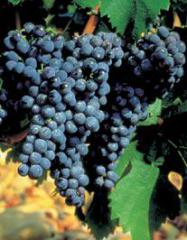
Origin:
Intially, Carignan comes from Spain, more specifically from Aragon. In the 12th century, it was introduced into southern France where it thrived on the shores of the Mediterranean, from both an agronomic and climatic standpoint.
Aromas:
Most of the time, wines made from Carignan have notes of spices, ripe fruits (namely prune), blackberry and black cherry. After ageing in oak barrels, these are accompanied by hints of toasted bread, grilled almonds or leather.
Wines features:
Carignan has a high potential for acidity, and average potential for sugar content and color, especially when harvested in high yields. By controlling yield, however, less acid, more concentrated and thus better balanced wines can be obtained. In this case, the tannins are softer and less herbaceous. Carbonic maceration is a winemaking technique that enables these characteristics to be easily improved. The wines thus become smoother and fruitier. Thanks to their low yield, wines made from old vines are often of great quality – powerful and full-bodied.